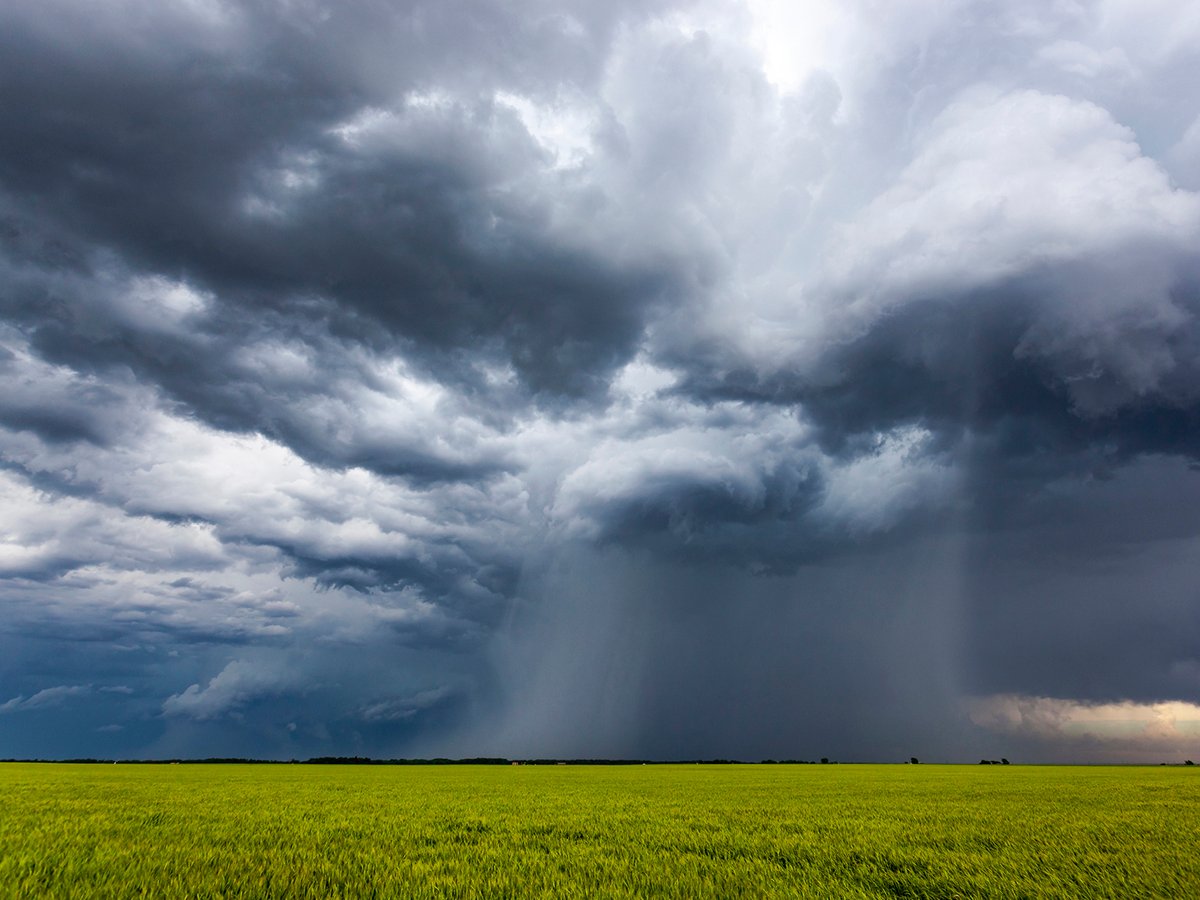Glenn Sawyer was feeling pleased with himself.
He had sold a load of barley on April 18 for $3.92 per bushel to a local feed mill. It was his best barley price since he started farming in 1974.
It did a lot to lift his spirits as he plans his spring work.
“I’m really optimistic about everything,” said the farmer from Acme, Alta., who grows canola, wheat and barley.
Like many of his colleagues in southern Alberta, he stays tuned to the weather channel, where he hears forecasts of more rain, snow and cold temperatures. Little work is being done across the south.
Read Also

Extreme rain increases as planet warms
In this issue, we are going to wrap up our look at extreme rainfall by examining the different weather patterns that tend to be associated with these rainfall events.
Sawyer uses a soil thermometer before seeding. He likes temperatures between five and 10 C, but it was nowhere near that by mid-April when he usually starts preliminary work. With steady rain and big dumps of wet snow, he expects little action in the field before May 1.
He remains optimistic. A new biofuel plant may be built nearby, offering a new market for his spring wheat and canola. His hopes are also raised by potential changes to the Canadian Wheat Board, which could permit more open barley sales. That’s good news for Sawyer because of nearby malting plants with which he could do business, even though he has achieved malting quality only twice in 35 crops.
He needs warm, dry weather, but he laughs at the cycle of complaining that is often associated with farmers.
“As soon as the sun comes out for four days, they’ll say it is too dry,” he said.
Municipal agriculture fieldmen say the situation is similar farther south.
Sugar beets were planted in the Lethbridge area on April 16, but work stopped after wet snow fell April 19.
“Generally guys are out in the fields by now, but it has been one of those years,” said Dave Matz of the County of 40 Mile.
Nevertheless, southern moisture conditions are average because of a dry fall and a warm winter in which arid Chinook winds sucked away soil moisture. It is rebuilding with April showers, but soil probes show the moisture only goes down about a foot, said Bob Kaufman of Cypress County.
“We can never refuse any moisture,” said agriculture fieldman Jamie Meeks of the County of Warner.
Local farmers tell him they are planting less wheat and more barley this year to capture better prices for malt and feed. In some cases producers are tearing up older hay fields and seeding them to barley as part of a longer-term rotation to rejuvenate the soil.
Colder weather and more snow may have removed pests such grasshoppers, but new enemies moved into grain bins during the winter. Rusty grain beetles and red flour beetles invaded bins where wheat was stored at about 25 C last fall. It was nearly impossible to cool it down to eight or nine degrees, and some farms had spoilage.
“Some was really bad by the time they caught it,” Meeks said.
Brian Otto of Warner, Alta., got ahead of that problem in the late 1990s when he installed aeration systems in his bins to condition and store the grain. He avoided last winter’s spoilage problems and now is trying to get work done in the wet weather.
Before the weather changed he was top dressing what looks to be a promising winter wheat crop. Once it is drier and warmer, he can turn his attention to hitting a vigorous crop of stinkweed and flixweed, also called tansy mustard.
“You have to be patient and wait until they are actively growing to get out and kill them. I learned that from the school of hard knocks.”
Otto will be seeding about 4,000 acres; 15 percent will be winter wheat.
“This spring is much more upbeat. Last spring we were putting seed in the ground and prices didn’t look good,” he said.
He did not change his rotation to take advantage of improved prices.
“Prices are high in all crops and they pencil out well enough there was no need to change my rotation.”
He grows Navigator durum, barley, yellow peas, yellow mustard and safflower, which he and a group of farmers sell for birdseed. The marketing takes more time, but the crop has paid well since 1981.
In a normal year Otto would be in the field by April 20. Intense heat arrives in July and the crops need to be headed out if they are to survive.
“Timing of seeding means everything to this area,” he said.
Ken Graumans of Seven Persons, Alta., has lots of plans if he could just get into the sticky fields. The wet weather has been good for alfalfa stands, but frustrating for those hoping to start seeding by mid-April.
“Nobody is complaining about the moisture, but it is time to get some work done.”
Graumans is planning more soft white wheat as part of his regular rotation in a year when all grain prices look good. However, his expenses for fuel and fertilizer are also increasing so the gains are small.
“If we can raise a good crop we should be on the black side this fall,” he said.















